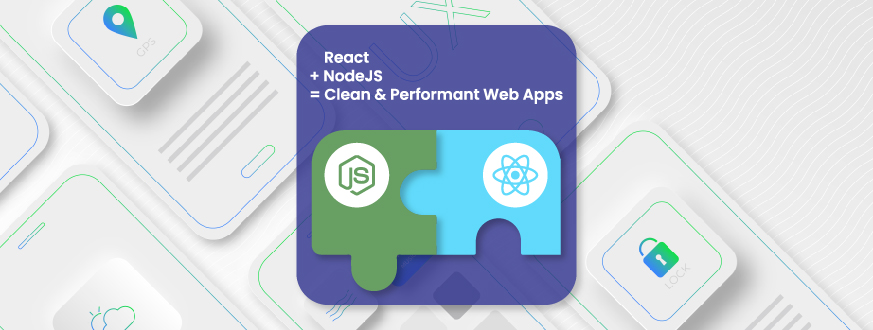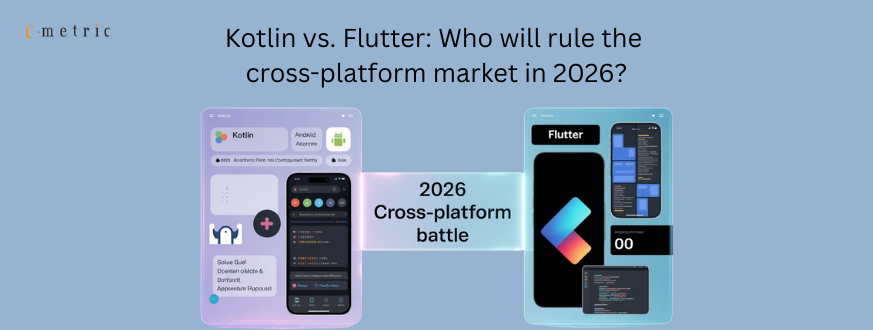Building an application isn’t enough. The app you’re building must be effortless and efficient at the same time.
Developers have a tough time making this happen as they have to delve deeper to find out resources that will make this happen.
Using React with Node JS is a cutting-edge approach the modern-era product owners are adopting to fulfil this goal. If you aren’t aware of the nitty-gritty of this, scroll down as we’re going to explain why and how to combine React with Node JS to take your application development level to a top-notch level.
Why Do Product Owners Want to Use Node JS with React?
It was not very long before entrepreneurs discovered the power of combining Node JS with React. But, the approach has already made high waves in the developer industry and has become the first choice of many product owners.
But, why?! What makes the combination of React with Node JS such lucrative?
Reasons are presented next.
-
Accessibility to Real-Time Data
Applications that can fetch real-time process data will certainly win end-users hearts. We already know that Node.JS features an event-driven architecture capable of processing real-time data. When combined with React, Node.js can be used to create web applications that can process huge data traffic with realistic feeds.
-
Quick Time-to-Market
Both React and Node.JS come with a wide range of pre-designed resources that can use immediately. Also, Node JS with React is a highly compatible duo that can create web applications with fewer complexities and glitches. In short, overall development time reduces way beyond one’s expectations. In case you need rapid solution delivery, combining React and Node.JS is the best approach to adopt.
-
Better Scalability
Businesses having scalability in mind must consider combining React with Node.js as both these techniques are scalable and provide dynamic views. Applications that must handle heavy traffic can only be built using these technologies.
-
Not Much Back-end Hard Work
Both Node.JS and React can be used for front and back-end development. While a developer uses these two languages, there is no need to invest heavily in the back-end and learn languages like Python or Ruby. React will cover all your front-end development needs while Node.JS will look after the back-end. This way, huge effort, time, and money savings are on your way.
-
High Performance is Certain
The event-driven and non-blocking I/O model of Node.JS makes it ultra-lightweight and performance-driven.
When combined with React, it leads to high-performing application development which is free from hassles like slow page speed and high page load time.
-
Quick Single Page Application Development
In case you need a single-page application, nothing can beat the utility that using React with Node JS brings. Both these technologies remove many traditional barriers and make the process extra simple.
-
Streamline Development is Certain
Both the technologies are equally fast, scalable, and efficient, which means the overall application development process will be more streamlined.
-
Amazing JavaScript Friendliness
By combing React with Node js, a developer can use the power of JavaScript in full swing. Use of MERN Stack is possible.
MERN, which stands for MongoDB, Express, React, and Node.js, is one of the most inventive frameworks for web application development. Combining React with Node.JS implements MERN stack possible at least possible hassles.
-
Using JSON APIs
In case you need to use JSON API for your application development process, it’s highly suggested to use React with Node.JS as this combination promotes code reusability and makes quick code sharing possible.
When and Why Use Node.js for Backend Development?
Is It Mandatory to Use Node in the Back-end When We Use React In the Front-end?
Honestly speaking, React is a very independent language and hardly bothers about what’s happening at the application’s back-end. So, you have the freedom to use Node.JS or any other framework of your choice for back-end development.
The language is unopinionated about how data is fetched. It just needs a medium to display the data; it doesn’t have one. Hence, any language can work at the back-end, Java, PHP, or Rails. However, it’s highly suggested to use Node.JS at the back-end as these two, when combined, lead to better data usability and quick development. Certain cases like single page development or development of apps handling heavy data can taste success only when Node.JS is combined with React.
The combination of React with Nodejs in web development is recommended but is not the only option available. As long as you have adequate expertise, you can use any technology combination.
How Does Node.js With React Help Meet Changing Market Demands?
Surviving in today’s cut-throat era is not easy, and businesses have to find a way to make it through. As application acts as the first mean of communication between business and customers, its perfection and performance contribute heavily to the business’s success.
Applications built by combining React with Node.JS can satisfy all the customers’ expectations. For instance, customers need impeccable UI and real-time data accessibility. Using Node.JS with React makes this possible.
One significant advantage of using React with Node.JS is quick development, as mentioned above. Because of this, businesses don’t have to make their customer wait for a supportive business application, feature updates, and many other facilities. Everything that customers are expecting out of an application will be delivered with zero downtime.
The flexibility that one enjoys with React promotes the generation of reusable UI components, while the event-driven structure of Node.js empowers the app for better traffic handling.
In a nutshell, with these two technologies under your belt, it’s possible to create powerful apps that will woo your customers’ hearts, handle huge data traffic, and are highly scalable. Businesses have a chance to create impactful applications that will improve customer experience, market reach, and SEO ranking causing higher revenue and traffic.
Benefits of Using React with ASP .Net Core
Conclusion
React with Node.JS; this is the best combination ever made for ease down the web application development. While Node.JS brings unmatched utility to back-end development, React takes care of the front-end.
The combined use of these two is a blessing in disguise for the organization as application development becomes quick, seamless, flawless, and aim-oriented. However, it could be too overwhelming for someone who doesn’t know these technologies well.
Thus, hiring a full stack developer who is well-versed with Node.js and React development from a trusted source is the best bet. C-Metric is offering pre-vetted and fully-seasoned Node.js and React developers = full-stack developers to the product owners seeking immaculate web application development. Connect with us today and explore ways to use the best of both worlds; Node.js and React.
FAQs
-
How to use Node and React together?
Combining React with Node JS is not very challenging if you know the nitty-gritty of both frameworks. You can combine React with Node js by setting up the app’s back-end via express-generator, taking the help of create-react-app for React-based front-end development, using Axios for API calls, effectively handling POST requests on the server, using express-file upload, and finally connecting React with Node.js.
-
Do You Need Node.js in Back-End To Run React?
It’s not mandatory to always use Node.JS at the back-end while React is at the front end. It’s because React hardly bothers about which language is used at the back-end.
-
Node JS is considered for web development for the Back-end or Front-end?
Even though Node.js is a server-side library, it can be used for front and back-end development with the same ease. This programming language has great compatibility with React and can be used heavily for both back and front-end development.
-
Which kind of JS library is React? A Front-end or Back-end?
React is a JavaScript-based front-end library used widely to design UI components of a web application. Developed by Facebook, React is the first choice of many single-page application developers because of its ease of usage and seamlessness.












Get in Touch